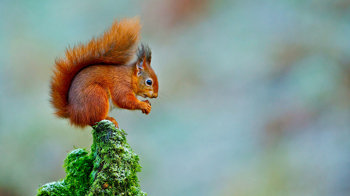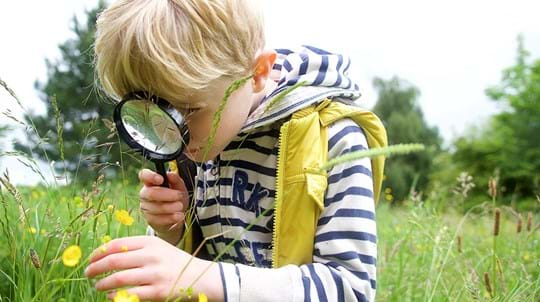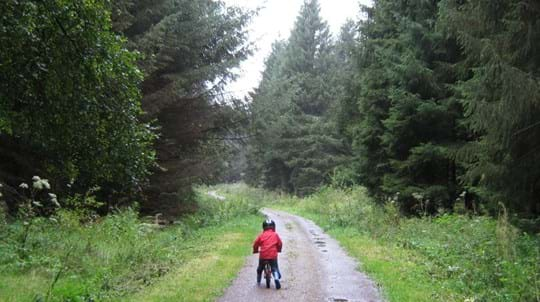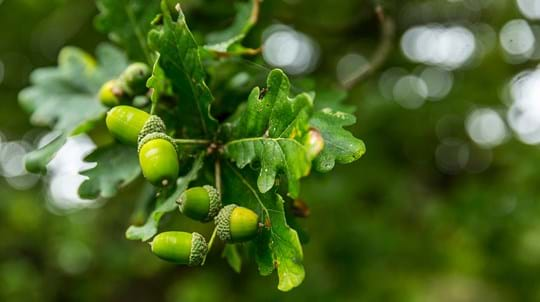
Kinclaven Bluebell Wood
Stanley

Woodland Trust wood
81.02 ha (200.20 acres)
NO139376
Explorer 380
OS Landranger 53
Kinclaven Bluebell Wood is known for the spectacular display of bluebells that carpet the woodland floor in May, but there is plenty more to admire. With stunning scenery and rare wildlife, as well as a rich history on its doorstep, this wood is a pleasure to visit.
Features
- Parking nearby
- Public access
- Spring flowers
- Grassland
- Broadleaved woodland
How to get to Kinclaven Bluebell Wood
Kinclaven Bluebell Wood is located near Murthly in Perthshire. It is just under 18km (11 miles) from Perth and lies in the middle of a bend of the River Tay.
From the west: From the B9099 on the south side of Murthly, turn off east onto Station Road. Cross over the railway line and follow this road for just under 4km (2.4 miles). The car park is on the right with a height barrier at the entrance (2.05m high). There are also some informal laybys to the north and west of the wood.
From the east: From the A93, just north of the bridge over the River Isla and south of the Meikleour beech hedge, take the minor road signposted for Kinclaven, Murthly and Stanley. Follow this road for around 2.5km (1.6 miles). The car park is on the left at the end of the wood with a height barrier at the entrance (2.05m high). There are also some informal laybys to the north and west of the wood.
The nearest train station is Perth, approximately 18km (11 miles) from the wood.
Visit National Rail for more information.
There is no official bus stop near the wood. However, bus routes do pass the western side of the wood. Look for ‘(opp) The Knapp’ on timetables.
Visit Traveline for more information.
Facilities and access
There is an unsurfaced circular footpath around Kinclaven Bluebell Wood, Oakwood Loop, as well as an additional path to the west.
The circular walk is mostly flat with a slight rise at the east and west ends. There are some uneven areas and exposed tree roots. It is part of the core path network and connects to the Kinclaven church route. The route is waymarked with signposts at junctions.
The easiest way to access the circular path is from the car park. Please note the path is earth and sections can get muddy after rain.
There is a car park near the north-west corner of the wood with space for 30 cars and a height barrier at the entrance (2.05m high). There are also some informal laybys to the north and west of the wood.
Wildlife and habitats
Animals
Kinclaven Bluebell Wood is a refuge for rare and fascinating wildlife. The wood is a bird watcher’s paradise, look out for great spotted woodpeckers, linnets, and spotted flycatchers. It is also home to pine martens and red squirrels.
Trees, plants and fungi
The plants and trees found at Kinclaven Bluebell Wood are a total treat for the eyes. Famed for its incredible display of bluebells each spring, you can also admire the mighty veteran beech trees, delicate wood anemone and charming dog violet, to name a few.
Habitats
Kinclaven Bluebell wood has a variety of habitats for people and wildlife to enjoy. There are 50 hectares of ancient oakwood, home to the spectacular display of bluebells the wood is known for. There are also 32 hectares of grassland which have been planted with over 32,000 native trees between 2018 and 2020.
History of Kinclaven Bluebell Wood
The area surrounding Kinclaven Bluebell Wood is steeped in history. Nearby Kinclaven Castle was burnt down by the famous knight William Wallace during a siege in 1297. Its remains are still visible in the undergrowth. The castle treasure was taken to nearby woodland where Wallace and his men hid.
The Old Kirk Road to Kinclaven Church runs through the wood, an ancient right of way once known as ‘Court Road’. It is believed that criminals were once marched along this road to be hanged from the trees.
Acquisition
We purchased the site from Ballathie Estates in the summer of 2017, following a successful appeal and thanks to a gift left in a supporter’s will.
The wood was once named Court Hill and fields to the south retain this name. Most of these fields were wooded until the 1940’s when trees were felled. Between 2018 and 2020 the fields were planted with over 34,000 native trees and shrubs, this has increased the size of the wood by half. This planting will turn the grassland back to the woodland it once was, creating a more resilient landscape by linking with and buffering the existing woodland. The planting was carried out by the local community, local school children, and volunteers. We couldn’t have done it without you all.
Things to do at Kinclaven Bluebell Wood
Walks
With lots of routes for varying abilities, including the Oakwood Loop, venturing out on foot is a great way to explore.








































